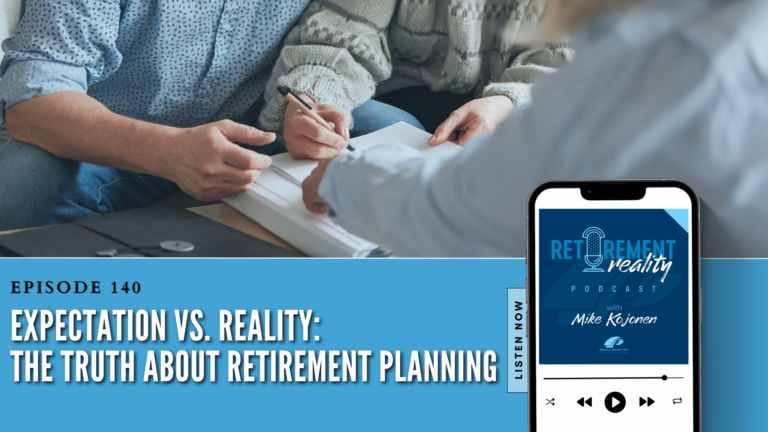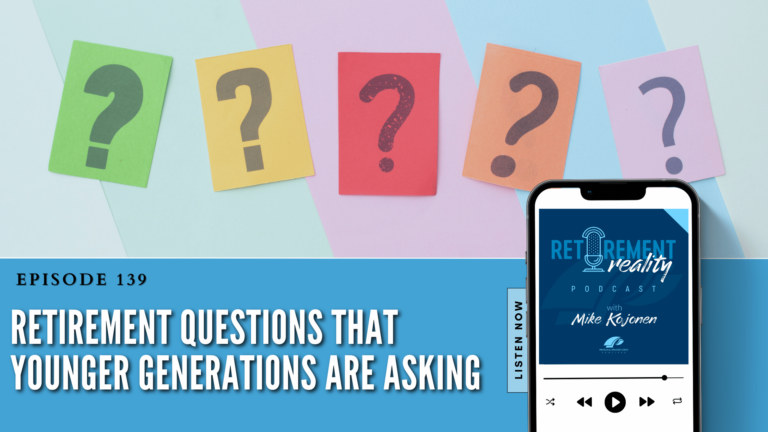Quick Guide to Planning Your Retirement:
- Start Early: The sooner, the better. Every year counts.
- Calculate Your Needs: Aim to replace 70% to 90% of your pre-retirement income.
- Set Priorities: Retirement savings vs. other financial goals.
- Choose the Right Accounts: Consider IRAs, 401(k)s, and other investment options.
- Plan for Healthcare: Don’t overlook future healthcare costs.
- Consider Social Security: Understand when and how to claim benefits effectively.
Retirement planning is about more than just saving money; it’s about ensuring you can enjoy your future without financial stress. For those of you in Minnesota and Wisconsin approaching retirement, think of this as your blueprint to preserve what you’ve worked hard for and to lay down a path towards a fulfilling retirement. Whether it’s traveling, spending time with family, or pursuing hobbies, your golden years should be about enjoying life to the fullest, with peace of mind regarding your finances.
It’s never too early or too late to start planning for retirement. If you’re feeling behind, strategic moves now can greatly benefit you later. And for those well on their way, it’s about fine-tuning your strategy to ensure your financial health is robust for the years to come.
At its core, retirement planning is preparing today for the life you dream of tomorrow. And with some guidance, patience, and wise decisions, achieving a financially secure retirement is within your reach.

Understanding Retirement Needs
When we talk about how to retire, we’re really asking, “How can I maintain my standard of living in retirement?” It’s all about income replacement and preserving the lifestyle you’re accustomed to.
Why Income Replacement Matters
Your income during your working years serves multiple purposes – it covers your daily expenses, allows you to save for the future, and enables you to enjoy life’s pleasures, big and small. In retirement, your needs don’t disappear; they just change shape. The goal is to replace your income in a way that still covers your needs and wants.
- Daily Living Expenses: Even without a commute or work wardrobe, you’ll still have groceries to buy, utilities to pay, and a home to maintain.
- Healthcare: Often, healthcare costs rise as we age. Planning for these expenses is critical.
- Leisure and Travel: With more free time, you might want to travel more or pick up new hobbies.
Standard of Living: A Closer Look
Maintaining your standard of living involves more than just covering basic expenses. It’s about being able to live life on your terms. This could mean having the financial freedom to visit family, support charities, or pursue hobbies without financial stress.
Strategies for Income Replacement
-
Savings and Investments: These are the bedrock of retirement income. The more you save now, the more you’ll have later. Consider a mix of savings accounts, stocks, bonds, and real estate investments.
-
Social Security: While it’s unlikely to cover all your needs, Social Security can form a significant part of your retirement income. The key is knowing when to claim benefits to maximize what you receive.
-
Pensions and Annuities: If you have access to a pension, understand how it works and what you can expect. Annuities can also provide a steady income stream in retirement.
-
Part-time Work: Many find joy and fulfillment in part-time work during retirement, not to mention the added income.
Calculating Your Needs
A general rule of thumb is aiming to replace 70% to 90% of your pre-retirement income. This percentage varies depending on your lifestyle and plans. For instance, someone planning extensive travel might aim higher, while someone else might need less.
To get a clearer picture, start by calculating your current expenses, then adjust for changes you anticipate in retirement. Don’t forget to factor in inflation and potential healthcare costs. Tools like retirement calculators can be incredibly helpful in this process.
Prioritizing Goals
It’s important to prioritize your financial goals. For many, retirement savings compete with other objectives, like paying off debt or funding a child’s education. While balancing these goals can be challenging, it’s not impossible. Creating a budget and a savings plan can help you allocate your resources effectively.
In Conclusion
Understanding your retirement needs is the first step towards a secure financial future. It requires a good look at your current lifestyle, your dreams for the future, and a practical plan to bridge the gap. The sooner you start planning, the more prepared you’ll be.
We’ll dive deeper into specific strategies to boost your savings, make the most of Social Security, and plan for healthcare costs. All these elements play a crucial role in ensuring you can retire with confidence and enjoy the standard of living you deserve.
The $1000 a Month Rule
Wes Moss, Disposable income
When considering how to retire comfortably, there’s a simple yet powerful guideline known as The $1000 a Month Rule. This rule, popularized by financial expert Wes Moss, suggests that for every $1000 of monthly income you wish to have in retirement, you need to save $240,000. This rule is based on the principle of withdrawing 5% of your savings annually, which is a bit more aggressive than the traditional 4% withdrawal rate but still within reason for many retirees.
Why is this rule important?
Understanding this rule can help you break down the seemingly monumental task of retirement saving into more manageable chunks. It shifts the focus from the intimidating overall total to a monthly income goal, making it easier to plan and act upon.
Applying the Rule:
– Calculate your desired retirement income: Start by determining how much monthly income you’ll need in retirement to cover your expenses and maintain your desired standard of living. Don’t forget to account for inflation and any anticipated changes in your spending habits.
– Set your savings target: Use the $1000 a month rule to calculate how much you need to save to generate your desired income. For example, if you determine you need $3000 a month to live comfortably, you’ll aim to save $720,000 based on the rule.
– Adjust for Social Security and other income sources: The money you save isn’t your only source of income in retirement. You can reduce your savings target by factoring in Social Security benefits, pensions, or any other steady income you expect to receive.
Key Considerations:
– Disposable Income: Focus on building your savings from your disposable income. Any amount you can set aside now, no matter how small, will contribute to your future monthly income.
– Investment Choices: How you invest your savings can impact how much you need to save. A balanced and diversified portfolio may help your savings grow more efficiently over time.
– Flexibility: Your needs and goals may change as you approach retirement. Be prepared to adjust your savings strategy accordingly.
Saving for retirement can seem daunting, but by breaking down your goals into smaller, actionable steps, it becomes much more manageable. The $1000 a Month Rule offers a clear and straightforward way to understand how much you need to save to achieve your desired monthly income in retirement.
We’ll explore additional strategies to enhance your savings, make strategic decisions about Social Security, and effectively plan for healthcare expenses. Each of these components is essential for building a robust retirement plan that aligns with your financial and lifestyle goals.
Next, we’ll delve into steps to start your retirement journey, including assessing your financial standing and boosting your savings.
Steps to Start Your Retirement Journey
Assess Your Financial Standing
Understanding where you stand financially is crucial when you’re figuring out how to retire. Begin by assessing your savings status and understanding what benefits you might expect from Social Security.
- Savings status: Look at all your savings accounts, including emergency funds, retirement accounts (like 401(k)s and IRAs), and other investments. This gives you a baseline.
- Social Security: Get an estimate of your future Social Security benefits by using the tools available on the Social Security Administration’s website. This forecast can help you plan when to start claiming benefits.
Boost Your Savings
To ensure a comfortable retirement, you’ll likely need to boost your savings. This involves two main strategies: investing and budgeting.
- Investing: If you’re not already, start investing in a diversified portfolio that matches your risk tolerance and retirement timeline. Consider low-cost index funds or ETFs as a start.
- Budgeting: Review your current spending and identify areas where you can cut back. Redirect these savings into your retirement accounts. Every little bit helps your future self.
Social Security Strategies
Making smart decisions about Social Security can significantly impact your retirement income.
- Claiming benefits: Delaying your Social Security claim can increase your monthly benefit. While you can start claiming as early as age 62, waiting until your full retirement age (or even until 70) can maximize your benefits.
- Delay benefits: If you can afford to, consider delaying your Social Security benefits. This strategy can increase your monthly checks significantly, providing more financial security in your later years.
Tax-Smart Retirement Strategies
Using Roth IRAs and Traditional IRAs can help you manage your tax burden in retirement.
- Roth IRA: Contributions to a Roth IRA are made with after-tax dollars, meaning withdrawals in retirement are tax-free. This can be a smart choice if you expect to be in a higher tax bracket in retirement.
- Traditional IRA: Contributions may be tax-deductible, lowering your taxable income now. However, withdrawals in retirement are taxed. This could be beneficial if you expect to be in a lower tax bracket in retirement.
Planning for Health Care Costs
Healthcare can be one of the biggest expenses in retirement. Planning for these costs involves understanding Medicare and considering a Health Savings Account (HSA).
- Medicare: Get familiar with Medicare coverage options and costs. Enrollment begins three months before your 65th birthday. Understanding your coverage options can help you budget for healthcare in retirement.
- Health Savings Account (HSA): If you’re eligible, contributing to an HSA can be a tax-efficient way to save for healthcare expenses in retirement. Funds contributed are tax-deductible, grow tax-free, and can be withdrawn tax-free for qualified medical expenses.
Taking these steps early in your retirement planning can set you on the path to a secure and fulfilling retirement. It’s about making informed decisions that align with your personal and financial goals. By assessing your financial standing, boosting your savings, understanding Social Security strategies, employing tax-smart strategies, and planning for healthcare costs, you’re laying a solid foundation for your future.
Transitioning into the next section, we’ll explore how much you really need to retire, taking into account the savings target, inflation rate, and after-tax rate of return.
How Much Do You Really Need to Retire?
Now, let’s dive deep into figuring out how much you really need to retire. This question is crucial because it sets the stage for your retirement planning. It involves understanding the savings target, inflation rate, and after-tax rate of return. Let’s break it down in simple terms.
Savings Target
Your savings target is like a financial finish line for your retirement. But how do you find that line? Start with your annual expenses. Experts often suggest aiming to replace around 70% to 90% of your pre-retirement income. Why not 100%? Because certain expenses like commuting costs go down when you retire.
But remember, every person’s needs are unique. Some might be comfortable with 70%, while others might aim for 90% or more, especially if they plan to travel or pick up new hobbies.
Inflation Rate
Inflation is like a slow leak in a tire. Over time, it decreases the purchasing power of your money. When planning how much you need to retire, you must account for inflation. Otherwise, you might find yourself short on funds 20 years down the line.
A common mistake is to overlook the impact of inflation on retirement savings. For instance, assuming an average annual inflation rate of 3%, in 20 years, an expense of $50,000 would balloon to about $90,306. Therefore, when calculating your retirement needs, always factor in inflation.
After-tax Rate of Return
This refers to the earnings on your investments after taxes have been deducted. It’s crucial because it impacts the growth of your retirement savings. Investing in tax-efficient vehicles like Roth IRAs might provide tax-free growth, depending on certain conditions, which can be beneficial in the long run.
The goal is not just to save but to invest wisely. A mix of stocks, bonds, and other assets tailored to your risk tolerance and time horizon can help you achieve an optimal after-tax rate of return.
Calculating Your Number
So, how do you bring all this together to find your number? Use a retirement calculator that accounts for these factors. Plug in your current savings, expected Social Security benefits, anticipated expenses, and other income sources. Adjust for inflation and after-tax returns to see if you’re on track.
Adjustments
It’s likely that your first calculation might not be perfect. That’s okay. Retirement planning is an ongoing process. You might need to adjust your savings rate, delay retirement, or find ways to cut down on expenses.
Transitioning from understanding how much money you need to retire, let’s next look into creating a retirement budget that aligns with your lifestyle and ensures you can cover your housing costs, healthcare, and possibly even downsizing, to stretch your retirement savings further.
Creating a Retirement Budget
When you’re figuring out how to retire, an essential step is crafting a retirement budget that fits your future lifestyle. This includes planning for housing costs, healthcare expenses, and the potential benefits of downsizing. Let’s break down each aspect:
Housing Costs
Your living situation in retirement plays a significant role in your overall budget. If you own your home, you might have paid off your mortgage, which can significantly reduce your monthly expenses. However, you still need to account for property taxes, insurance, maintenance, and utilities. On the other hand, if you’re renting or considering a move to a retirement community, you’ll need to budget for those monthly payments.
For those considering downsizing, selling a larger family home and moving into a smaller, more manageable property can free up equity that can be used to bolster your retirement savings. Downsizing can also reduce ongoing expenses related to home maintenance and utilities.
Healthcare
Healthcare costs can escalate as you age, making it a critical component of your retirement budget. It’s important to understand what Medicare covers and what additional out-of-pocket expenses you may incur for prescriptions, dental care, vision care, and long-term care.
Investing in a Health Savings Account (HSA), if you’re eligible, can be a tax-smart way to save money for healthcare expenses in retirement. Money in an HSA can be used tax-free for qualified medical expenses, providing a valuable resource to help manage health-related costs.

Downsizing
While we touched on downsizing in relation to housing costs, it’s worth considering more broadly. Downsizing doesn’t just apply to your home. It can also mean reducing overall living expenses by simplifying your lifestyle. This might include cutting back on discretionary spending, like dining out, expensive vacations, or luxury items.
By evaluating your spending habits before retirement, you can identify areas where you can comfortably cut back without sacrificing your quality of life. This process can help stretch your retirement savings further and ensure you have the funds to cover your needs for the long term.
In summary, creating a retirement budget requires a detailed look at your expected income and expenses. By carefully planning for housing, healthcare, and considering the benefits of downsizing, you can create a budget that ensures a comfortable retirement. The goal is not just to cover your costs, but to ensure you can enjoy your retirement years to the fullest. For those looking to dive deeper into managing retirement expenses, understanding the complexities of retirement planning, such as the different aspects of Medicare, can provide a more comprehensive view.
Transitioning from creating a retirement budget, it’s also crucial to understand the government benefits and assistance you might be eligible for, which can further support your financial stability in retirement.
Government Benefits and Assistance
When you’re figuring out how to retire, know that you’re not alone. There are several government programs designed to help seniors manage their expenses. These include the Supplemental Nutrition Assistance Program (SNAP), Medicaid, Medicare, and Supplemental Security Income (SSI). Let’s break these down to see how they can help you.
SNAP
SNAP provides eligible individuals with benefits to buy nutritious food. If your income is limited, this program can help you maintain a healthy diet during retirement.
Medicaid
Medicaid offers health coverage to millions of Americans, including eligible low-income adults, children, pregnant women, elderly adults, and people with disabilities. It can cover many of the medical costs that Medicare does not, making it a valuable resource for retirees with limited financial resources.
Medicare
At the age of 65, you become eligible for Medicare, a program that can significantly reduce your healthcare expenses. It’s divided into parts that cover hospital insurance, medical insurance, and prescription drugs. Understanding how Medicare works and what it covers is crucial for planning your healthcare costs in retirement.
Supplemental Security Income (SSI)
For those who have little to no income and are over 65, blind, or have disabilities, SSI provides monthly payments to meet basic needs for food, clothing, and shelter. This could be a critical source of income if your savings are not sufficient.
How to Apply
Eligibility for these programs depends on various factors, including income, resources, and age. The rules can also vary by state, especially for SNAP and Medicaid. To find out what benefits you qualify for, contact your local Department of Social Services. They can guide you through the application process and help you understand the benefits available to you.
These benefits are designed to support you. If you’re eligible, they can make a significant difference in your ability to manage your retirement expenses. By combining these government programs with your savings, Social Security benefits, and any additional income streams, you can create a more secure financial foundation for your retirement years.
Transitioning into the next phase, it’s also worth considering other ways to supplement your retirement income, such as part-time work or a side hustle. These can not only provide extra cash but also keep you engaged and active in retirement.
Generating Additional Income
When you’re figuring out how to retire, one crucial step is looking at ways to increase your income. This is especially important if your savings might not cover all your expenses or if you’re looking for ways to enhance your retirement lifestyle. Here are some practical options:
Part-Time Job
Many retirees find that a part-time job can be both financially and personally rewarding. It’s a way to stay active, engage with the community, and earn extra money. You don’t have to commit to a stressful job; even a few hours a week doing something you enjoy can make a significant difference in your income.
Side Hustle
A side hustle allows you to leverage your skills or hobbies to make money. This could be anything from freelance writing, tutoring, crafting, or even pet sitting. The beauty of a side hustle is that it can be as flexible as you need it to be, fitting around your retirement lifestyle while still boosting your bank balance. If you earn more than $400 from these activities, the IRS expects you to report it as taxable income.
Reverse Mortgage
For homeowners, a reverse mortgage offers a way to tap into the equity of your home to generate income. This option allows you to borrow against the value of your home, receiving funds as a lump sum, fixed monthly payment, or line of credit. The loan is repaid when the home is sold or the borrower passes away. It’s a powerful tool for those who own their home outright and meet the age requirement, typically 62 years or older. However, it’s crucial to understand the terms and conditions before proceeding, as a reverse mortgage can affect your estate and the inheritance you may wish to leave your heirs.
Exploring these avenues can provide a substantial boost to your retirement income, making your golden years more comfortable and enjoyable. Each option has its benefits and considerations, so evaluate them carefully to determine what best fits your needs and circumstances.
It’s vital to recognize that avoiding retirement with no money requires a multi-faceted approach. This includes debt management, finding ways to increase your income, and making the most of workplace retirement plans. Let’s dive into how tackling debt can significantly impact your retirement readiness.
Avoiding Retirement with No Money
Avoiding retirement with no money is like preparing for a long journey. You need the right plan, some good tools, and a clear map. Here’s how you can ensure you’re on the right path.
Pay Off Debt
Credit card balance transfers, Debt consolidation
-
Credit Card Balance Transfers: This is moving your debt from a high-interest credit card to one with lower interest. It’s like moving your tent to higher ground when the river rises – it buys you some time at a lower cost.
-
Debt Consolidation: Combining several debts into one with a lower interest rate. It’s like turning several heavy backpacks into one you can manage more easily.
Getting rid of debt means you won’t be dragging it into retirement like a heavy suitcase. It frees up more of your money for saving and investing.
Increase Your Income
Ask for a raise, Second job
-
Ask for a Raise: Show your value and the going rate for your job. It’s like asking for a better seat on the plane when you know there are empty ones up front.
-
Second Job: This can be anything from part-time work to freelancing. Think of it as adding an extra engine to your retirement savings train.
More income means more fuel for your journey to a financially secure retirement.
Utilize Workplace Retirement Plans
401(k), Pension
-
401(k) Plans: If your employer offers this, get in on it. Especially if they match some of your contributions. It’s like getting a free ticket to your retirement destination.
-
Pension Plans: Less common now, but if you have one, understand how it works. It’s like having a reserved seat on your retirement journey.
These plans are powerful tools for building your retirement savings. Don’t leave them unused.
Invest Wisely
IRA, Taxable brokerage account, Real estate
-
IRA (Individual Retirement Account): Whether it’s a Traditional or Roth IRA, it’s a great vehicle for your retirement savings. Think of it as packing your own parachute.
-
Taxable Brokerage Account: This is investing outside of retirement accounts. It’s like having an extra backpack for your journey.
-
Real Estate: Buying property can provide rental income or grow in value. It’s like owning a vehicle that you can rent out or sell later.
Investing is how you grow your savings. The earlier you start, the more your money can grow.
By tackling debt, increasing your income, utilizing workplace retirement plans, and investing wisely, you can avoid retiring with no money. It’s about making smart choices now for a comfortable journey later. The path to retirement is a marathon, not a sprint.
Next, we’ll explore delaying retirement as a viable option for enhancing your retirement readiness and benefits.
Delaying Retirement: A Viable Option?
When thinking about how to retire, one strategy that often comes to mind is delaying retirement. This approach can have significant financial benefits, particularly regarding Social Security benefits and your overall work earnings.
Social Security Benefits
Deciding when to start Social Security is a crucial part of retirement planning. You’re eligible to claim Social Security payments at age 62. However, these payments will be reduced unless you wait until your full retirement age (FRA), which varies depending on your birth year. For instance, the FRA is 66 and 10 months for those born in 1959.
If you can wait even longer, up to age 70, your monthly benefit amount increases by about 8% for each year you delay past your FRA. This increase can significantly boost your lifetime retirement income, especially if you have a long life expectancy. For more insights on delaying Social Security for increased benefits, consider exploring detailed guides on making this decision, such as the insights from Principal Preservation Services.
Work Longer
Working longer not only allows you to delay claiming Social Security benefits but also provides additional years to save and invest. This extra time can be particularly beneficial if your retirement savings are not yet where you’d like them to be. Continuing to work can also mean maintaining valuable health insurance benefits through your employer, potentially saving you significant money before Medicare kicks in at 65.
Benefits of Delaying Retirement
- Increased Social Security Benefits: As mentioned, delaying your Social Security claim can result in significantly higher monthly payments.
- More Time to Save: Working longer gives you more time to contribute to retirement accounts like 401(k)s or IRAs.
- Health Insurance: If your employer provides health insurance, working longer can help bridge the gap until Medicare eligibility.
- Engagement and Purpose: Continuing to work can provide ongoing engagement, purpose, and social interaction, contributing to overall well-being.
Considerations
Before deciding to delay retirement, consider your health, job satisfaction, and financial needs. If you enjoy your work and are in good health, working longer could be a rewarding choice. However, if job stress or health issues are concerns, it might be worth exploring other retirement planning strategies.
Delaying retirement can be a powerful way to improve your financial security. However, it’s important to weigh the benefits against your personal and health circumstances. Planning for retirement involves considering various strategies, including when to claim Social Security benefits and how long to remain in the workforce.
Next, we’ll address some of the most Frequently Asked Questions about retirement, helping you further clarify your path toward a secure and fulfilling retirement.
Frequently Asked Questions about Retirement
Retirement planning can feel like navigating through a dense forest without a map. But, worry not. We’re here to provide clear, easy-to-understand answers to some of the most common questions you might have about how to retire. Let’s dive in.
What is the proper way to retire?
Retiring the “proper way” means different things to different people, depending on their unique life situations and financial goals. However, a few universal steps can set you on the right path:
- Start planning early: The sooner you start, the more time your savings have to grow. But remember, it’s never too late to begin.
- Understand your expenses: Knowing how much you’ll need annually in retirement is crucial. Aim to replace 70% to 90% of your pre-retirement income.
- Diversify your income sources: Don’t rely solely on Social Security. Consider other income sources such as pensions, investments, or even a part-time job.
- Plan for healthcare: Healthcare can be a significant expense in retirement. Make sure you’re familiar with Medicare coverage and consider a Health Savings Account (HSA) if eligible.
How much money does the average person need to retire?
The amount needed to retire comfortably varies. A commonly cited rule of thumb is to have 70% to 90% of your annual pre-retirement income. For example, if you earn $63,000 a year before retirement, you might need around $44,000 to $57,000 a year in retirement. However, this can fluctuate based on your lifestyle, location, and health needs. Use a retirement calculator to get a more personalized estimate.
What to do first when you want to retire?
The first step is to get a clear picture of your financial situation:
- Assess your savings: Look into all your savings accounts, including 401(k)s, IRAs, and other investments.
- Calculate your Social Security benefits: Understand when the best time for you to start taking Social Security benefits is. Delaying can increase your monthly checks.
- Create a retirement budget: Identify your expected income and expenses in retirement to see if you’re on track.
- Consider consulting a financial advisor: A professional can help tailor a retirement plan to your specific needs and goals.
Retirement planning is a journey with many paths leading to the same destination: a secure and enjoyable retirement. Start planning now, stay informed, and make adjustments as needed to ensure your golden years are truly golden.
In the conclusion, we’ll wrap up by emphasizing the importance of planning ahead, consulting with a financial advisor, and creating a realistic plan that aligns with your retirement goals.
Conclusion
As we’ve journeyed through the essentials of how to retire comfortably and securely, the underlying theme has been clear: planning ahead is not just beneficial; it’s crucial. Retirement might seem like a distant reality for some or an impending milestone for others, but the truth is, it’s never too early or too late to start preparing for it.
Consulting with a financial advisor is a step we cannot emphasize enough. A professional can provide personalized insights and strategies that align with your unique financial situation, helping you navigate the complexities of retirement planning. They can assist in making informed decisions about investments, tax planning, healthcare, and more. Every great masterpiece requires a skilled artist behind it, and your retirement plan is no different. For expert guidance, consider reaching out for a complimentary financial review with Principal Preservation Services.
Creating a realistic plan is your roadmap to a future where you’re not just surviving but thriving. This involves setting clear, achievable goals, understanding your financial needs, and preparing for the unexpected. Life can throw curveballs, and your retirement plan should be flexible enough to adapt to changes in your circumstances or goals.
Let’s recap the key takeaways:
– Start early: The sooner you begin, the more your savings have time to grow.
– Get professional advice: A financial advisor can tailor a plan to your unique needs, helping you navigate through your options.
– Make informed decisions: From choosing the right investment strategies to understanding when to claim Social Security benefits, knowledge is power.
– Prepare for healthcare costs: Anticipate and plan for medical expenses to avoid unwelcome surprises.
– Consider additional income sources: Whether it’s a part-time job, side hustle, or leveraging government benefits, extra income can provide a financial cushion.
Retirement planning is not a one-size-fits-all process. It’s deeply personal and requires a thoughtful approach. By taking proactive steps today, you can pave the way for a retirement that’s not just secure, but also fulfilling.
The goal of retirement planning is to ensure that you can live your later years with dignity, comfort, and peace of mind. It’s about creating a future that aligns with your dreams and aspirations. With careful planning, a bit of patience, and the right guidance, you can craft a retirement that’s every bit the masterpiece you envision it to be.
If you’re ready to start planning your retirement masterpiece, we’re here to help. Visit our Retirement Philosophy page to learn more about how we can assist you in achieving the retirement you deserve.










